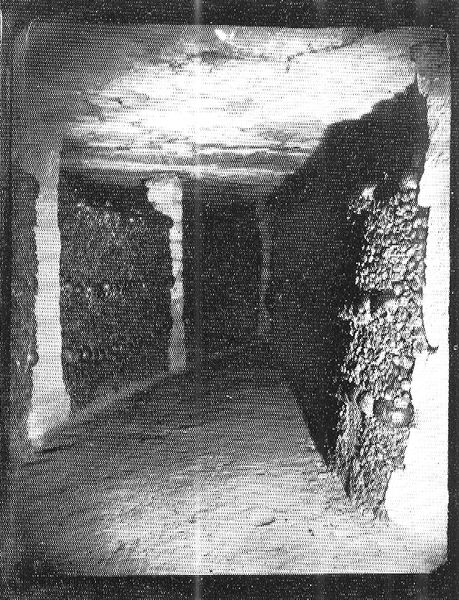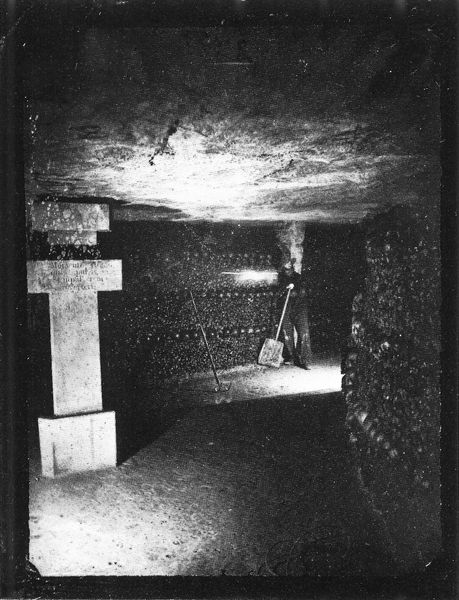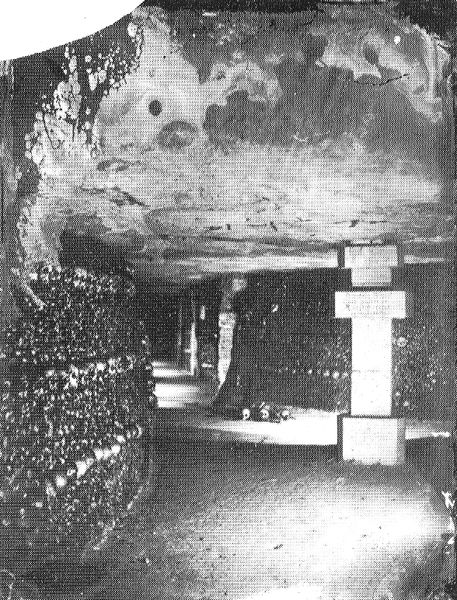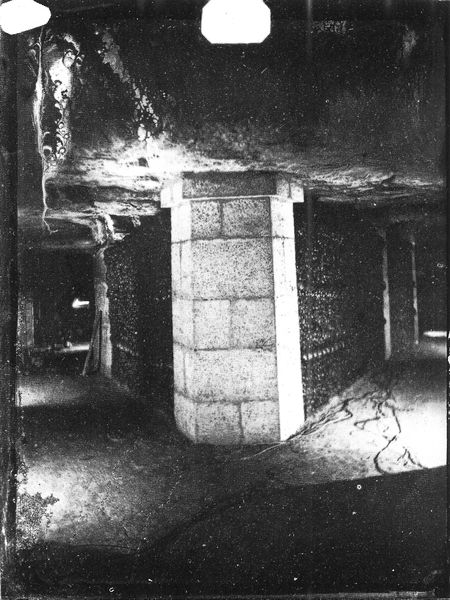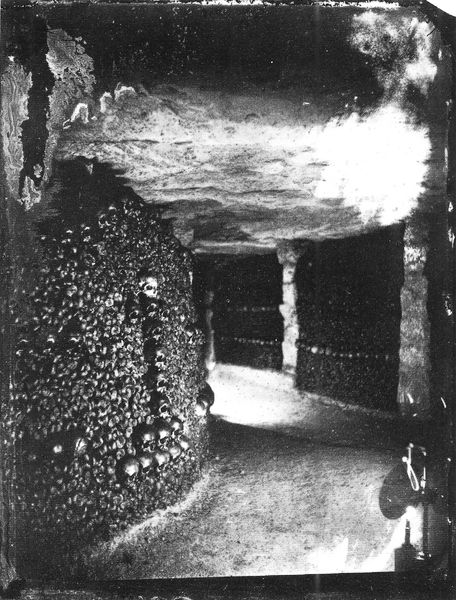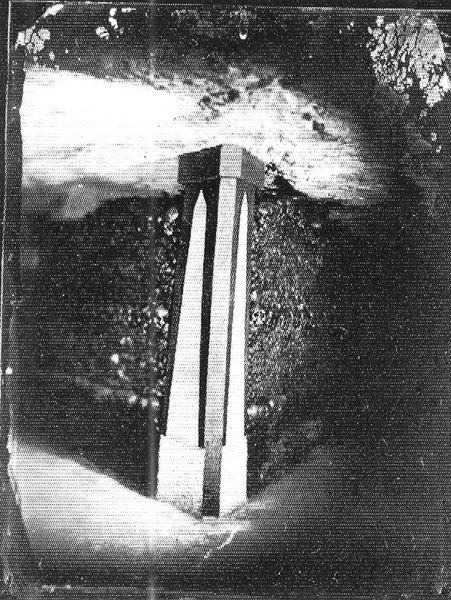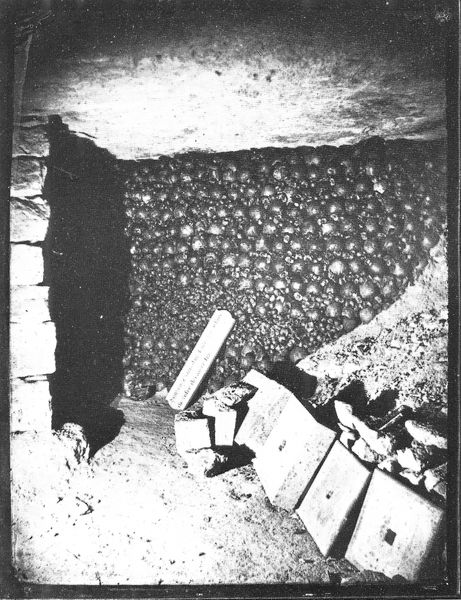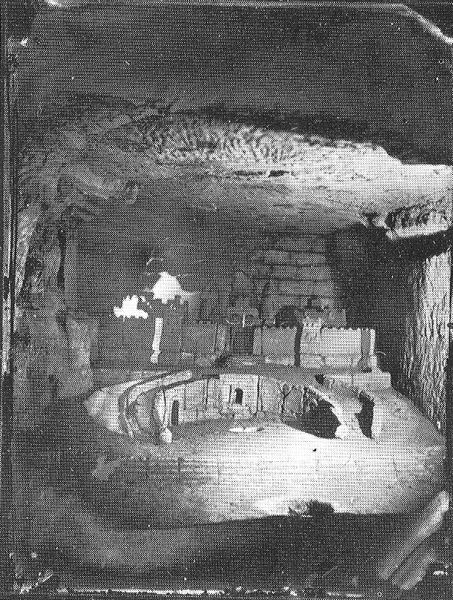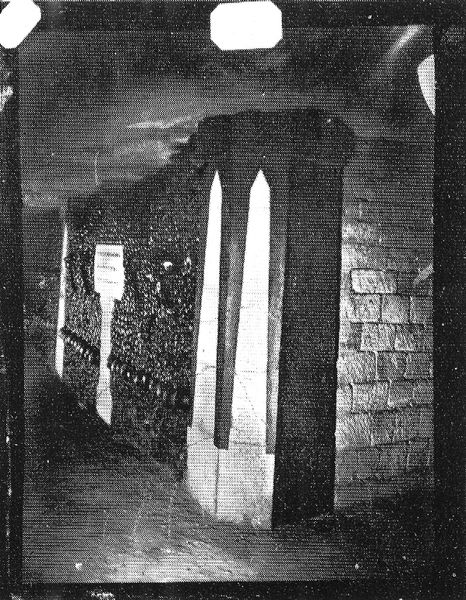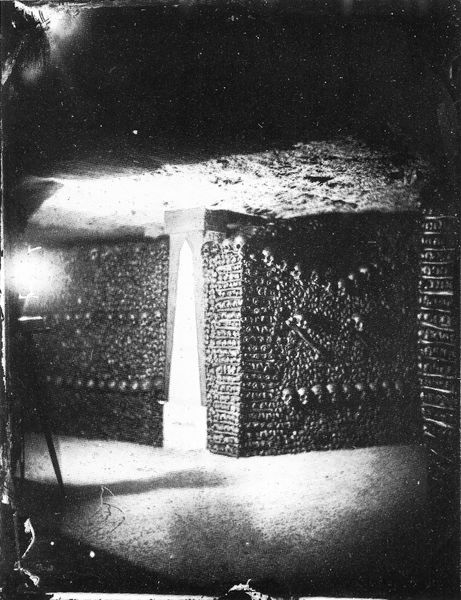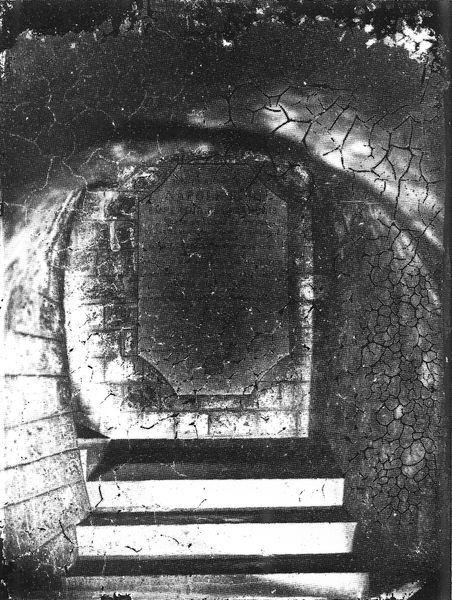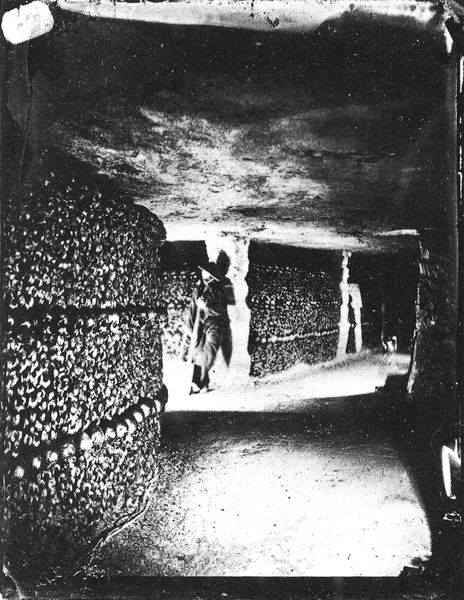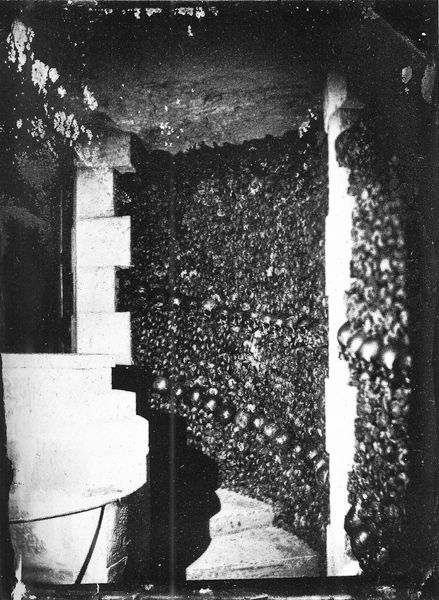
photography, gelatin-silver-print
#
landscape
#
photography
#
black and white
#
gelatin-silver-print
#
monochrome photography
Copyright: Public domain
Editor: This is Felix Nadar's "Catacombes De Paris" from 1861, a gelatin silver print. It's intensely…dark. There's a cavernous space, and along the sides… are those bones? What should we make of Nadar’s choice of such a grim subject matter, especially considering the materials and processes involved? Curator: What intrigues me most is the material reality that Nadar presents: the specific arrangement of bones, the cold damp stone. It compels us to consider labor – the labor of death, the labor of those who arranged the bones, and indeed Nadar's own labor in creating this image in a space inherently hostile to photography at the time. This challenges any idealized notion of "high art," doesn't it? Editor: I see what you mean. It wasn't a simple snapshot. Actually creating an image, getting the equipment down there… It speaks to the resources Nadar had, too. Wouldn't you agree? Curator: Precisely! Consider also what consumption means in this space, the human remains arranged and consumed not literally, but as material of morbid curiousity in a specific historical setting and culture. Can you feel how this photograph forces us to consider the complex layers of access, display, and perhaps exploitation involved here? Editor: So, the subject, the bones themselves, are like a raw material arranged and displayed, and Nadar’s photograph adds another layer by commodifying that image for consumption… Wow. Curator: Exactly. Through his use of photography as material evidence, Nadar documents both the catacombs and the act of seeing itself as another step in processing of things and history. It exposes both the literal and metaphorical foundations of Paris, challenging any sanitized narrative. Editor: That perspective really reframes how I see this image. I initially reacted to the mood, but now I'm considering all these material layers that Nadar has laid bare. Thank you! Curator: My pleasure. Thinking about art in terms of material realities really opens up avenues to analyze the work with new lenses.
Comments
No comments
Be the first to comment and join the conversation on the ultimate creative platform.
